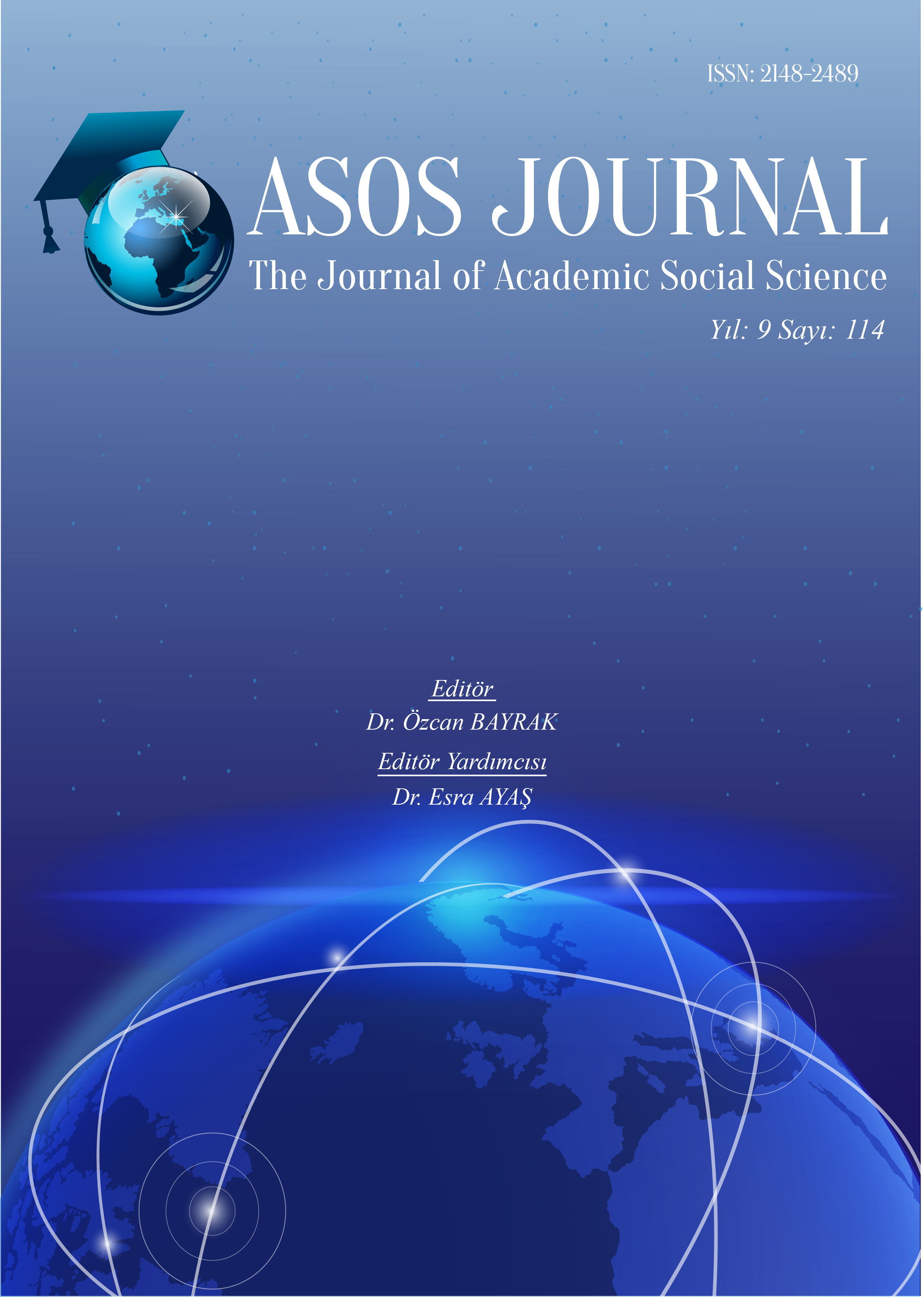Author :
Abstract
Osmanlı’da eğitim, 19. yüzyılın ortalarına kadar genellikle sıbyan mektepleri ve medreselerde yapılmıştır. Sıbyan mektepleri ve medreseler meydana gelen değişimlere karşı toplumsal ihtiyaçları karşılayamamış, 19. yüzyılın ikinci yarısından itibaren birçok alanda başlayan ıslahatlara eğitimin de dahil edilmesiyle iptidai, rüştiye ve idadi gibi modern eğitim veren okullar açılmıştır. Sultan II. Abdülhamid (1876-1908) ve II. Meşrutiyet dönemlerinde (1908-1914) hız kazanan okul inşası, Cumhuriyet döneminde de devam etmiştir. Yenileşme hareketleri sonucu ortaya çıkan bu eğitim yapıları, Osmanlının son yılları ile Cumhuriyetin ilk yıllarında (1908-1930), I. Ulusal Mimarlık üslubuyla inşa edilmiştir. Bu çalışmada, I. Ulusal Mimarlık üslubu özellikleri taşıyan Havza’daki Taş Mektep ve Kamlık Köyü İlkokulu tanıtılacak ve değerlendirilecektir. Taş Mektep ve Kamlık İlkokulu, plan ve cephe düzenlemesiyle, inşa edildiği dönemin üslubunu taşrada yansıtması ve günümüze dek koruması bakımından önem taşımaktadır.
Keywords
Abstract
Education in the Ottoman Empire was generally carried out in primary schools and madrasas until the middle of the 19th century. Ottoman primary schools and madrasahs could not meet the social needs in the face of the changes that occurred, and with the inclusion of education in the reforms that started in many fields since the second half of the 19th century, schools providing modern education such as "iptidai", "rüştiye" and "idadi" were opened. Sultan II. Abdulhamid (1876-1908) and II. School construction accelerated during the Constitutional Monarchy (1908-1914) and continued in the Republic period. These educational buildings, which emerged as a result of the innovation movements, were built in the last years of the Ottoman Empire and the first years of the Republic (1908-1930), with the First National Architecture style. In this study, Taş Mektep and Kamlık Village Primary School in Havza, which has the characteristics of the I. National Architecture style, will be introduced and evaluated. Taş Mektep and Kamlık Primary School is important in terms of reflecting the style of the period in which it was built in the provinces and preserving it until today with its plan and facade arrangement.
Keywords
- Acer, Ö. (2016), “Tarihî-Milli Yapılar Ulusal Mimarlık Akımına Yozgat’tan Örnek Bir Yapı: Cumhuriyet Mektebi/İlkokulu Binası”, I. Uluslararası Bozok Sempozyumu Bildiri Kitabı, C. 4, s. 381-389.
- Aktemur, A. M.-Arslan, M. (2006), “I. Ulusal Mimarlık Akımı ve İstanbul- Karaköy’deki Örnekleri”, Atatürk Üniversitesi Güzel Sanatlar Enstitüsü Dergisi, 16, s. 1-32.
- Alsaç, Ü. (1973), Türk Mimarlık Düşüncesinin Cumhuriyet Devrindeki Evrimi, Mimarlık Dergisi, 121-122, s. 13-14.
- Aslanoğlu, İ. (2010), Erken Cumhuriyet Dönemi Mimarlığı 1923-1938, Bilge Kültür Sanat Yayınevi, İstanbul.
- Balcı, S. (2014), Cumhuriyet Döneminde Amasya (1923 1950) “İdari, Siyasi, Sosyal Ve Kültürel Yapı” Yayımlanmamış Doktora Tezi, Atatürk Üniversitesi Sosyal Bilimler Enstitüsü, Erzurum.
- Bozdoğan, S. (2012). Modernizm ve Ulusun İnşası (3. basım). (T. Birkan, Çev.), Metis Yayınları, İstanbul.
- Bozkurt, T. (2012), “İsmet Paşa İlköğretim Okulu ve Binası”, Konya Ansiklopedisi, s. 359-360.
- Bulut, M. (2006), Sivas’taki Geç Dönem Osmanlı Kamu Yapıları, Yüksek Lisans Tezi, Selçuk Üniversitesi, Konya.
- Çelemoğlu, Ş.–Atıcı, A. (2021), “Erken Cumhuriyet Dönemi İlkokul Yapılarına Bir Örnek: Malatya Gazi İlkokulu”, ANASAY, S. 15, 125-144.
- Fırat, N. (1996), 1900-1930 Yılları Arasında Konya’da Türk Mimarisi, Yayımlanmamış Doktora Tezi Ankara Üniversitesi, Ankara.
- Giray, K., (2009) “Sanat Tarihi, Cumhuriyet Dönemi Türk Mimarisi”, T. C. Kültür ve Turizm Bakanlığı Türkiye Portalı Projesi, Ankara, s. 2-8.
- Gürsoy, E. (2019), “Uşak’ta Erken Cumhuriyet Dönemi İlkokul Mimari Yapısı: Gazi Mustafa Kemal İlkokulu Örneği”, Elektronik Sosyal Bilimler Dergisi, 18 (69), s. 32-40.
- Işık, G. (2010). Kayseri’de Erken Cumhuriyet Dönemi Eğitim Yapıları, Yayınlanmamış Yüksek Lisans Tezi, Erciyes Üniversitesi/Fen Bilimleri Enstitüsü, Kayseri.
- Kodaman, B. (1991). Abdülhamid Devri Eğitim Sistemi, Türk Tarih Kurumu Yayınevi, Anlara.
- Kul, F. (2011). Erken Cumhuriyet Dönemi İlkokul Binaları. Mimarlık Dergisi (360), s. 66-71.
- Menç, H. (2007), Milli Mücadele Yıllarında Amasya Olaylar-Belgeler-Portreler, Amasya Belediyesi Kültür Yayınları, Amasya.
- Özbek, Y. (2013), “Erken Cumhuriyet Döneminde (1923-1954) Kayseri’de Okul Yapıları”, Belleten, 278, C. LXXVII, s. 271-347.
- Özgün, S. (2000), Denizli’deki Kamu Yapıları (1876-1940), Yayımlanmamış Yüksek Lisans Tezi, Selçuk Üniversitesi, Konya.
- Özkan, S. (1973), "Mimar Vedat Tek (1873-1942)", Mimarlık, S.121-122, İstanbul, s. 45-51.
- Sahtiyancı, E. ve Benli Yıldız, N. (2020), Erken Cumhuriyet Dönemi İlkokul Yapılarına Akçakoca’dan Bir Örnek: Orhan Gazi İlkokulu, Sanat Tarihi Dergisi, 39/2, Ekim, s. 589-603.
- Sözen, M. (1984), Cumhuriyet Dönemi Türk Mimarlığı, 1923-1983, İş Bankası Kültür Yayınları, Ankara.
- Sözen, M. (1996), Cumhuriyet Dönemi Türk Mimarisi, İş Bankası Kültür Yayınları, İstanbul.
- Turan, R. (2020), II. Abdülhamid Dönemi (1876-1909) Îdâdi Yapıları (Türkiye Örnekleriyle), Yayımlanmamış Doktora Tezi, Pamukkale Üniversitesi Sosyal Bilimler Enstitüsü, Denizli.
- Türk, İ. C. (2015), Osmanlı Memleketlerinde İlkokullar ve Umumi Mektepler Açılarak Bu Mekteplerin Çoğaltılmaları ve Islah Edilmelerine Dair II. Abdülhamid’e Sunulan Bir Layiha, A. Ü. Türkiyat Araştırmaları Enstitüsü Dergisi [TAED], 54, Erzurum, s. 713726.
- Yanardağ, A. (2020), Osmanlı’dan Cumhuriyet’e İlk Mektepler Talimatnameleri (1915-1929), Turkish History Education Journal, 9 (1), s. 89-108.
- Yavuz, Y. (1981), I. Ulusal Mimarlık Dönemi ve Mimar A. Kemaleddin Bey, Ankara.
- Zübeyirzade M. F. (1998) Yurdumuz Havza, (Hazırlayan Ali Tuzcu, Vatan Matbaası Ankara 1998.





